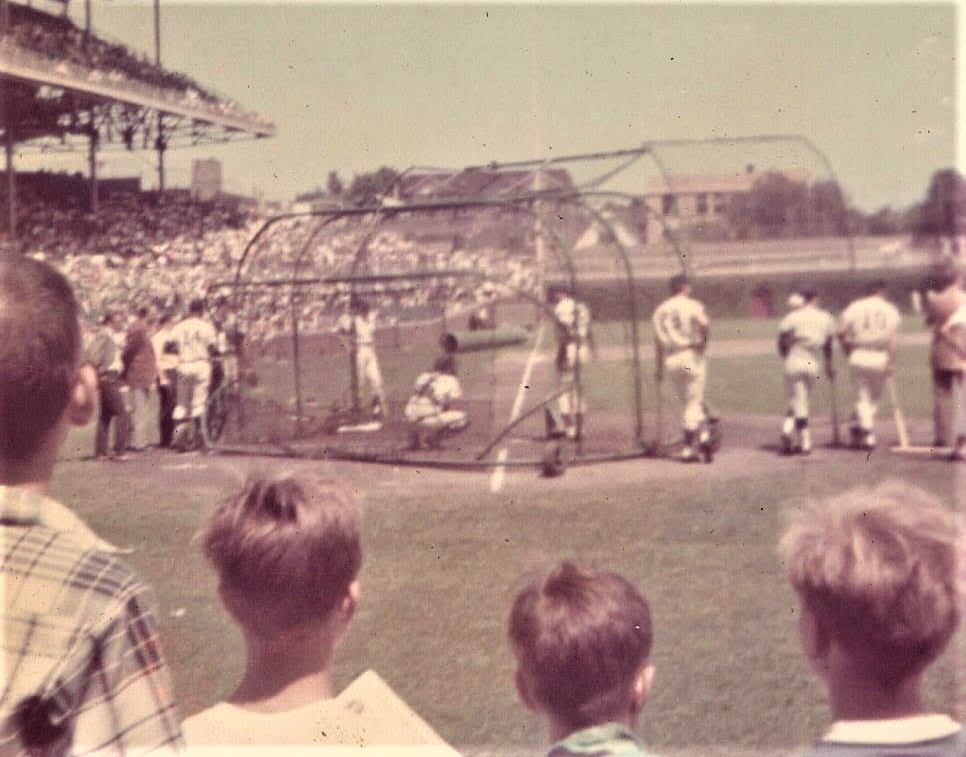Veteran Chicago reporter Patrick Butler wrote an article about The Forgotten 1970 Chicago Cubs: Go and Glow for the Booster, News-Star, and Skyline for their May 19-May 25, 2021 issues. Here's the full text of the article - enjoy!

By Patrick Butler
Bill Bike has always loved baseball. For a number of years, he was an active member of a local softball team when he wasn’t busy writing material for the University of Illinois Chicago College of Dentistry or hammering out his own books, ranging from Streets of the Near West Side to Winning Political Campaigns, as well as the tomes he poured out during his 24 years with UIC.
He has also kept busy with his other job as senior vice president of Central Park Communications and Associate Editor of the newspaper Gazette Chicago.
Along the way, incidentally, Bike has accumulated more than 50 awards in journalism, and communications, among them are three Lisagor Awards, the top honor in Chicago journalism.
So it should come as no surprise he would also get around to a baseball book—which he describes as “a labor of love” he’s been thinking about for years.
The result—The Forgotten 1970 Chicago Cubs: Go and Glow, just released by the History Press/Arcadia Publishing focuses on the days when the Cubs came closer to winning a World Series than at any time from 1945 to 2016 when the Lovable Losers finally hit pay dirt.
Cubs fans always will remember the beloved 1969 team. Yet the 1970 Cubs are, in many ways, more interesting. That was the year when the Cubs added “interesting characters like Joe Pepitone and Milt Pappas to the legendary nucleus of Billy Williams, Ron Santo, and Ernie Banks,” Bike said.
That was the season when Ernie Banks hit his 500th home run, Bike recalled.
For Banks, that 500th homer on May 12 sealed his “sure entry into the Hall of Fame, not that there was any doubt Ernie would make it,” Bike said.
It was also the year the Cubs made some changes that helped bring back the fans who had been melting away for quite awhile.
Although Cub broadcasters had been singing the praises of the “Friendly Confies” and “Beautiful Wrigley Field” for years, the atmosphere had been getting less friendly or beautiful for years, Bike noted.
“People had started taking to walking and dancing on the flat tops of the outfield walls and actually jumping on the field,” Bike noted, recalling that one woman even ran out on the field to kiss New York Mets third baseman Wayne Garrett, provoking a fan to toss a smoke bomb. Another spectator climbed over the centerfield scoreboard and the spectators stomped off the field at the game’s end.
Things had gotten even worse during the first home stand of the season when spectators began pelting the field with garbage after the game was over, Bike said.
Many blamed that kind of mayhem on changes in American society and the growing anger that didn’t get any better as the Vietnam War escalated, Bike recalled. People became rowdier and Wrigley Field patrons were no exception.
“Wrigley was at a crossroads. Management of several of the older ballparks around both leagues often gave up and let the drunks and rowdies take over. But not the Wrigley Family,” Bike said.
The management installed a wire “basket” in front of the bleacher seats “not only to keep garbage off the field, but to keep the fans in the bleachers,” Bike added. The Cubs also cemented concrete triangle caps on the outfield walls so people would no longer walk and dance on them, or use them as a jumping-off point for overrunning the field,” Bike noted in the book.
The family also put in gentlemanly coat and tie ushers—with extra security, he added.
Other major league owner soon started putting in improvements of their own, eventually changing the whole atmosphere
The Forgotten 1970 Chicago Cubs were indeed on their way to being able to “Go and Glow.”
Describing his book in a nutshell, Bike noted “my book is both fun and analytical. You’ll feel the heat of the pennant race, smell the popcorn and hot dogs and hear the crack of the bat in Wrigley Field in 1970.”
The Forgotten 1970 Chicago Cubs: Go and Glow, published by The History Press of Charleston, SC, is available at https://tinyurl.com/1970ChicagoCubs.